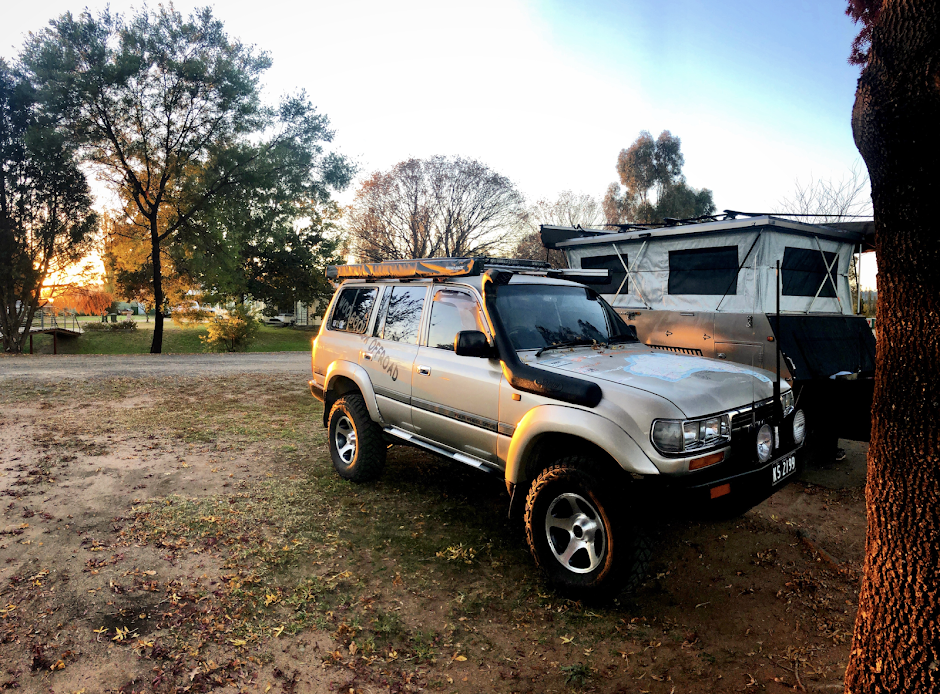We woke to another fine morning with the sun rising across the Cooper River. A nice casual morning to explore the Dig Tree and the surrounding area. We were amazed at the amount of flies again so bloody early in the morning, where I actually retreated back to my tent to eat breaky- they were that bad !!!
There were several other campers here, and at a rate of only $10 per night, it was a cheap camp with basic facilities. We heard that the caretaker often comes around each day- but we never saw him.
The camping area is right on the waters edge, where it was a nice change to see several types of birds on the water. Looking around it was evident too that the water was def down, a sign that there hasn’t been much water flow recently- most of the water flows down from north QLD cyclones. Driving on the property roads, we did get a glimps of the home station- and its only a guess to how they make money on this station. Although we did hear a few dogs barking in the night.
The dig tree and other markings are only a short still from camp, nice to stretch the old legs for a change. To see these carvings was pretty impressive- I mean just to walk this far north and to be here in this spot the explorers were bloody amazing.
Board walks had been placed around the trees for us tourist to view the markings and to protect the trees. I sincerely hope they do last another 100 years, just hope the white ants and borers stay away.
Thanks to Wikipedia here is a brief rundown on the markings and a link to the information.
The tree at the depôt camp that Brahe blazed to mark the location of the buried supplies on the banks of Bullah Bullah Waterhole on Cooper Creek in South West Queensland is a coolibah (Eucalyptus coolabah formerly Eucalyptus microtheca) estimated to be around 250 years old. Initially the tree was known as "Brahe's Tree" or the "Depôt Tree" and the tree under which Burke died attracted most attention and interest. As a result of the blaze on the tree and the subsequent popularity of the book "Dig" written in 1935 by Frank Clune, the tree became known as the "Dig Tree".[citation needed] There are three separate blazes on the tree; the camp number, a date blaze and the instruction to dig. Two of the blazes have grown closed and only the camp number blaze remains visible today.
In 1899 John Dick carved a likeness of Burke's face in a nearby tree along with his initials, his wife's initials and the date.
The Dig Tree is a heritage-listed site, having been listed on the Queensland Heritage Register in 2003.[12]
http://en.wikipedia.org/wiki/Burke_and_Wills_expedition
www.thargotourism.com.au/the-burke-and-wills-dig-tree
www.thargotourism.com.au/the-burke-and-wills-dig-tree


No comments:
Post a Comment